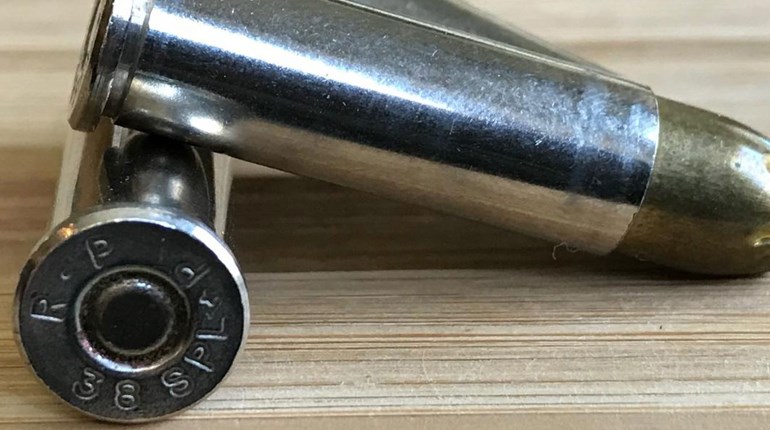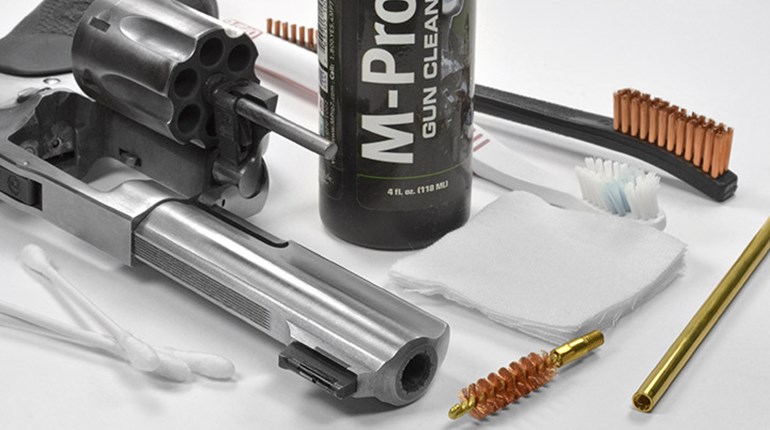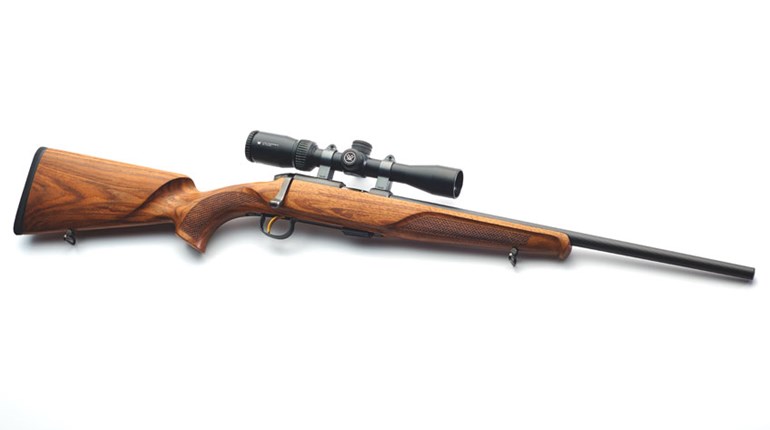
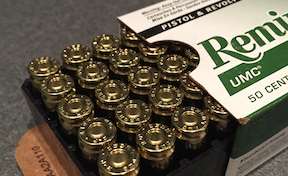
The ammunition crunch—dare we say it aloud?—seems to be easing. It’s been serious waves and troughs for almost five years by our count, and few disciplines have been left unscathed. The wallet-busting, one-box limits on fodder as mundane as rimfire and .380 ACP have relaxed to bricks and cases in most locales, and even handloaders are again filling some of their more esoteric needs. It’s a relief, to say the least.
We think we’ve noticed an odd corollary, however. Whether it’s just manufacturers really struggling to meet commitments in the distribution or retail channels, or the inevitable hiccups of new handloaders and manufacturers expanding capacity, we’re seeing a surprising number of issues with ammo. These are mostly of the it-won’t-go-bang type, and are few and far between when cartridges arrive in those ultra-familiar colored and marqued boxes. But no source seems altogether immune. So far, no cautionary tales of catastrophic failure, damage or injury have emerged, but we’d like to keep it that way. Merely irritating is still, ah, irritating.
So here are a few provisos to help you stay out of the ammo danger zone, whether you’re running a Dillon, Hornady or other press to white-hot speeds; ordering by the case; or box-at-a-timing it from a local source. For the moment, we’ll only deal with the back end of the cartridge.One of the biggest advantages of paying a buck or two more per 50- or 100-round container for your ammo is receiving it boxed and cased.
One of the biggest advantages of paying a buck or two more per 50- or 100-round container for your ammo is receiving it boxed and cased. Unless your time is worth almost nothing to you, you’ll save a surprising amount of it (time, that is), and perhaps a lot of that aforementioned irritation, too, because inspection—the key to eliminating most of these problems—is so easy. Orderliness alone makes most of the troublesome peculiarities easy to spot.
What does this inspection encompass? First-quality ammunition—again, this is mostly from American makers you’ll recognize—generally gets the utterly crucial priming very nearly perfect: Lot-to-lot consistency is a strong suit. Some foreign manufacturers are a little more, ahem, hit-and-miss. Don’t misunderstand us, however: Get a small quantity and check it out in your firearms. We’ve had good-to-fabulous results with several brands of offshore origin, and you might, too. Just don’t load up without a solid test (at least 200 rounds), and from more than one “lot” if you can.
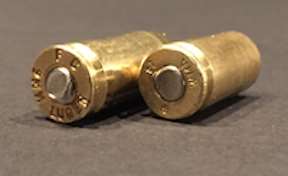
The presence of a primer is number one of course, but don’t laugh: We saw a reversed, empty primer cup in a round from a major maker in the last couple of weeks, after it was hand-ejected from a 1911 amid mumbled expletives. No bang obviously, but also no material danger—unless that round was loaded in a defensive pistol and then called upon. It’s a huge problem then, don’t ya think?
Slow down your visual pass just a little, and you can also check for misplaced or imperfect primer seating. This is a reliability differentiator of a much smaller degree, but important, say, if you plan to use the ammunition in a match or in a Carry Life context. Any wrinkle or deformation of the primer cup itself should disqualify a round for these applications. If severe, the round should be discarded (and preferably disassembled). Minor imperfections are generally safe, but also rarely make it into a commercial package you’ll encounter—a clear case where aesthetics and good functionality go hand in hand.But if they are positioned just right—well wrong, actually—they can still flash when hit by the firing pin or striker.
A rare but more serious manifestation of such a seating error is a literally sideways primer. Ugly, obvious and even less likely to escape modern QC, these are nevertheless dangerous on several counts. You hope such a primer will not act at all when struck. If it doesn’t, execute your malfunction clearance drill and rock on.
But if they are positioned just right—well wrong, actually—they can still flash when hit by the firing pin or striker. Usually this puffs a little carbon out of the barrel/slide interface accompanied by a thoroughly under-volume report, with no harm done, at least not yet. Even through ear protection, everybody knows something is amiss. But what you can’t determine is whether or not any ignition of the powder has occurred or is occurring (it’s a type of hangfire, in effect), and has pushed the projectile into but not out of the barrel—otherwise known as a squib.
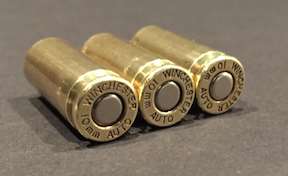
As always with a suspected squib, immediately stop shooting or attempting to shoot. “Shooting” a squib out of the barrel is dreadfully unsafe to attempt, extremely unlikely to work, and a reliable wrecker of firearms; just don’t do it. Particularly with a rifle, it is spectacularly unsafe. The good news here is that the cure is simple: Get and keep a squib rod in your range kit. (Remember; always push a stranded projectile back toward the chamber.) Believe it or not, we see folks look down the muzzle occasionally in this circumstance. Another big no-no. If you can’t see the lodged projectile from the rear, go straight to your rod to detect its location in the bore.
Here, we pause to sneer a bit at the cost-saving motives behind the slow demise of nickel-plating on primers. We get that the nickel buys very little in terms of cartridge integrity—point to you, bean counters. But we don’t care for the loss of the color contrast and what that means for the ease of inspection: If you find the same flaw in a brass-colored primered cartridge vs. a nickel-colored primer, we’ll bet lunch the nickel-against-brass flaw was easier to spot. That’s a small but perhaps crucial advantage.Our second examination is tactile. … It’s a check for primer seating depth, a source for ignition issues that is more easily felt than seen.
Our second examination is tactile. It, too, puts a premium on the convenience of primer-up, box-packed ammo, and proceeds very rapidly once you acquire—quite literally—the feel of it. It’s a check for primer seating depth, and accomplished by simply running your index finger over the back end of the cartridges. Proper seating depth is .002-.003 below the rim, and we aren’t kidding: You can feel this difference much better than you can see it, and after surprisingly brief practice. If you’re shooting new “factory” ammo, you may go quite a while before you find even one, but don’t fear: You’re training your “depth gauge” the whole time. When you encounter a high one, we bet you’ll smile. They stick out (ha ha) like a sore thumb.
If we find “flush,” or shallow-primed, rounds, we’ll relegate them to practice-only use. Their ignition may require more striking energy as the primer is essentially being finish-seated by the initial hit, and then percussed into flashing. This is more common in commercial reloads: Relatively huge variations in primer pocket specs (especially in 9 mm) are the main culprit, and only so much can be done to alleviate the problem. You can prove this diagnosis to yourself if you save these rounds: If you attempt to fire them again, most will shoot just fine. You fully seated the primer with the first strike, and caused it to flash as expected with the second.
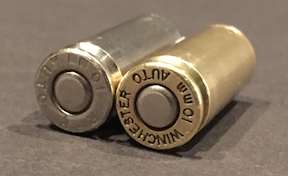
Seating depth issues are somewhat more common in “bulk,” or loose-packed, commercially reloaded ammo, but big worry isn’t justified as long as these checks are performed. They way they’re packaged, however, does imply that the checks will be more manually intensive and therefore time-consuming. We’ve shot a bunch in our day, and certainly can recommend such ammo for training—just use it with a proper set of expectations, and save yourself unwarranted annoyance. A “natural” 1- to 2-percent failure rate is fairly common, but subject to improvement through the culling we suggest.
Blatantly high primers are the last possibility. These are primers that have not been pushed to the bottom of the primer pocket, and the base of which actually sits above the base of the case. The firing pin/striker blow to the primer cup is even less likely to compress the priming compound inside against the anvil with sufficient energy to go “boom.” These are rare, and (again) may perform as expected upon a second strike. They’re also really easy to identify in the tactile check: We performed an ad hoc test to verify this, and a first-timer found the high-primered cases in one pass.Seating depth issues are somewhat more common in “bulk,” or loose-packed, commercially reloaded ammo.
Another consideration here: There is a slight chance that a slamming slide can set off a high primer. While we’ve never seen it happen, we have heard it claimed, and two problems bear consideration. The first is muzzle control: Such a “slam-fire” would be extremely rapid and unless grip architecture and mechanics are superb, could put a shot where it particularly shouldn’t go—downrange, but high, and perhaps over your backstop. Ugh.
The second presents danger closer to home—the chance of an out-of-battery ignition. Here, we mean a successful primer-strike and powder burn that occurs without the action being “locked.” Before you get too anxious about this one, let us say that it’s very unlikely. A primer would have to be very high indeed to hold an action open. That said, it’s a scary, potentially injurious gun-wrecker that is easily prevented with ammo inspection. We’d recommend these for discard, too.
A final caution is very much in the Carry Life wheelhouse. The demands of carry put some extra burdens on our ammunition, and manufacturers are well aware of what they are. For the most part, they do a fine job in quality control, as they should: Such specialized ammo commands a big premium (upwards of $2/round isn’t all that uncommon). Don’t be lulled into a casual frame of mind: It’s still your ammo, in your firearm and your loved ones on the line.
So watch those primers, and Carry on.
Read Part II here













